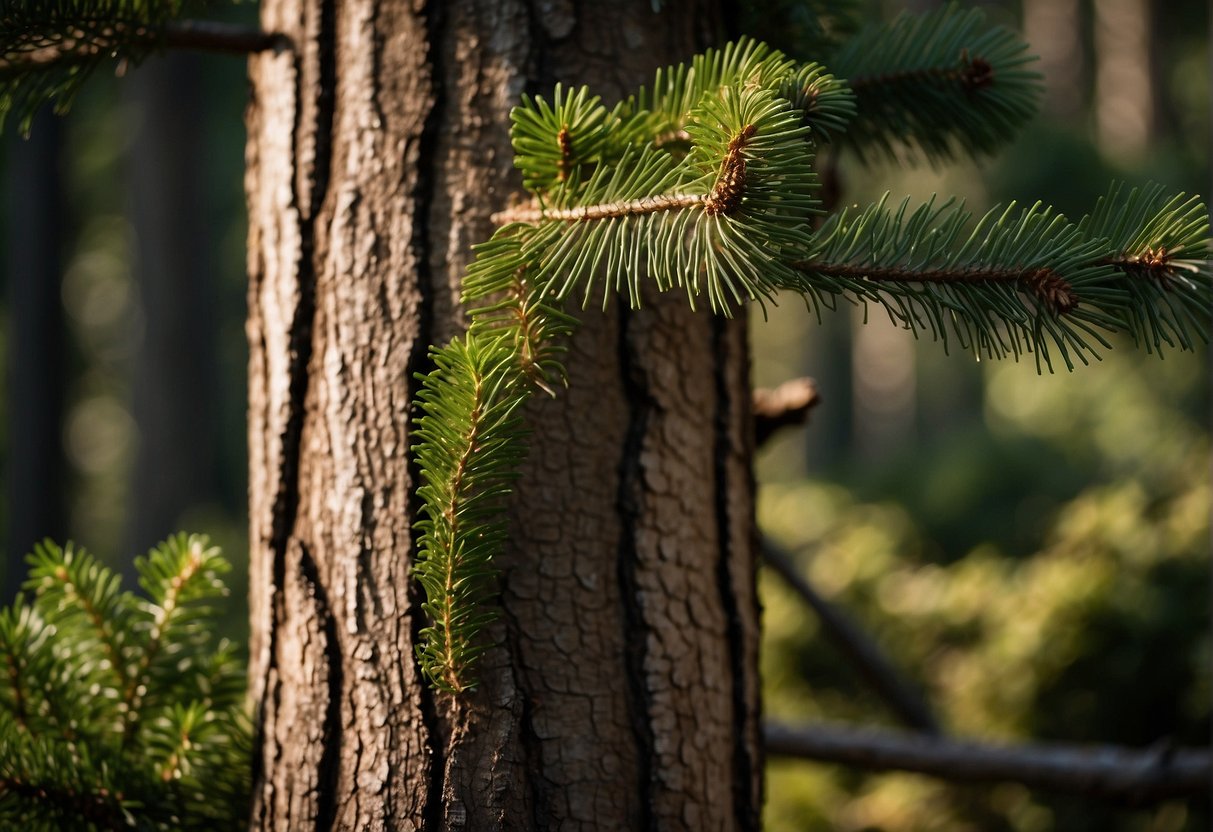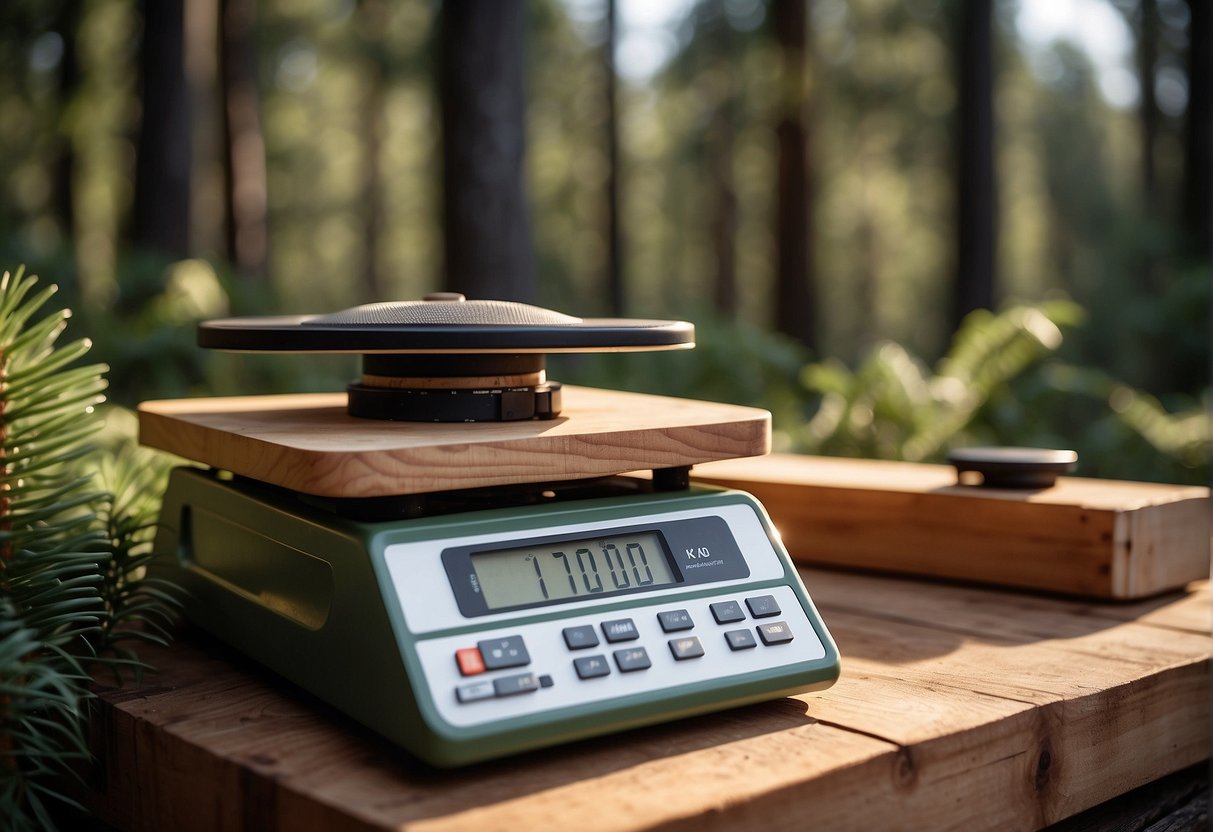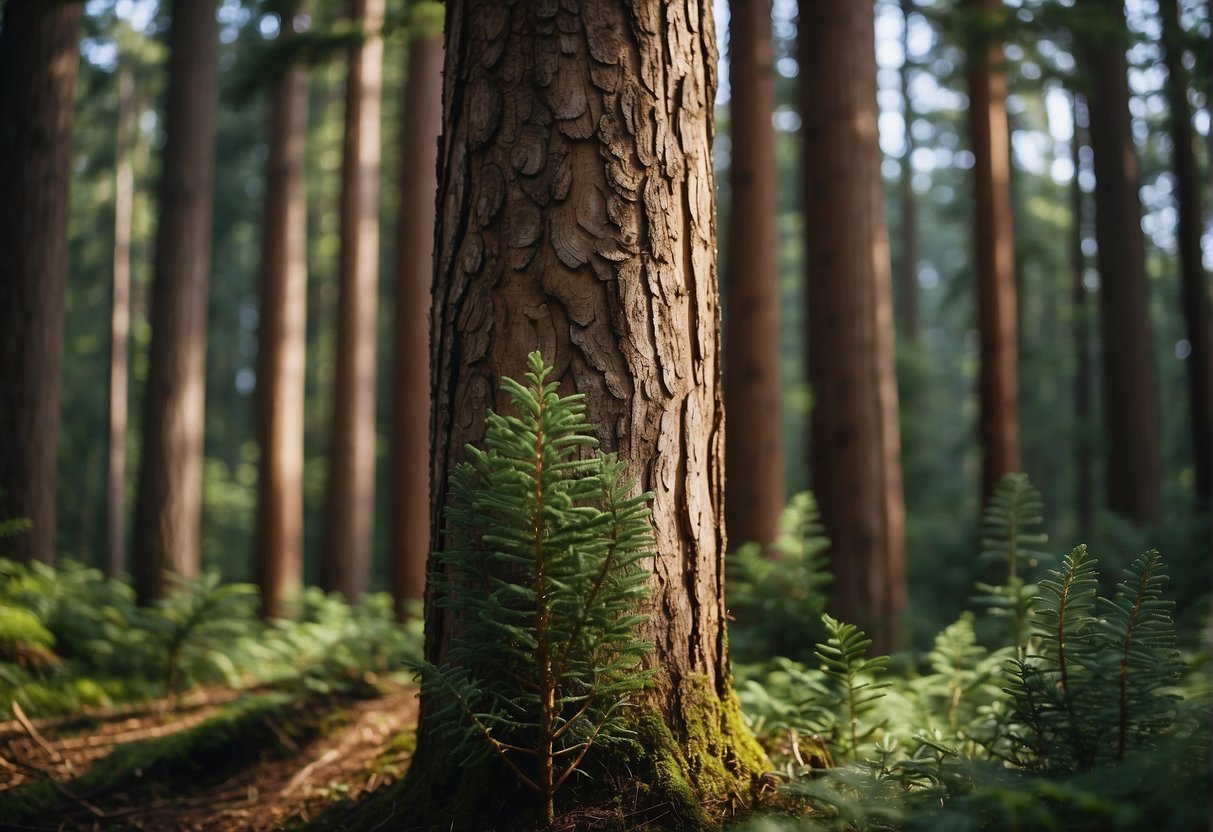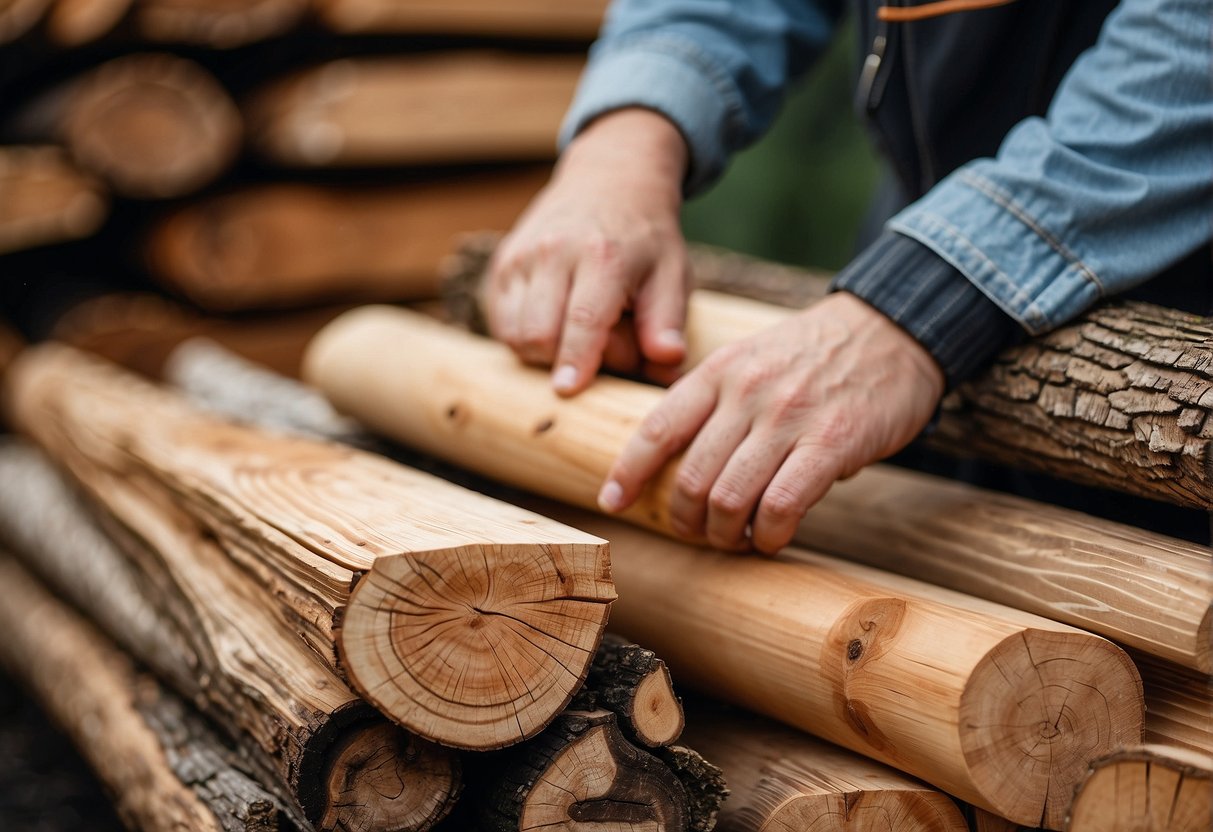Douglas Fir and Pressure-Treated lumber are two of the most popular wood choices for construction projects. Both have their own advantages and disadvantages, which can make it difficult to decide which one to use. In this article, I will compare Douglas Fir and Pressure-Treated lumber in terms of their properties, cost, maintenance, health and environmental considerations, structural applications and design, and special considerations for usage.
Understanding the properties of wood is essential before choosing the right type of lumber for your project. Douglas Fir is a softwood that is known for its strength, durability, and beauty. It is commonly used for framing, flooring, and furniture. Pressure-treated lumber, on the other hand, is treated with chemicals to make it resistant to rot, insects, and decay. It is ideal for outdoor projects such as decks, fences, and retaining walls.
When it comes to choosing between Douglas Fir and Pressure-Treated lumber, there are several factors to consider. The cost and maintenance of each type of lumber should be taken into account, as well as health and environmental considerations. Structural applications and design will play a significant role in the decision-making process, and special considerations for usage may also need to be addressed. Let’s dive into the details to help you make an informed decision.
Key Takeaways
- Understanding the properties of Douglas Fir and Pressure-Treated lumber is essential before choosing the right type of lumber for your project.
- The cost and maintenance of each type of lumber should be taken into account, as well as health and environmental considerations.
- Structural applications and design will play a significant role in the decision-making process, and special considerations for usage may also need to be addressed.
Understanding Wood Properties
Wood Species and Characteristics
When it comes to building structures, choosing the right wood species is crucial. Softwoods such as Douglas fir, cedar, spruce, hem-fir, and redwood are commonly used for construction purposes. Douglas fir is known for its strength and durability, making it a popular choice for framing and decking. On the other hand, pressure-treated wood is a softwood that has been chemically treated to make it resistant to moisture, decay, and insects.
Each wood species has its own unique characteristics that make it suitable for different applications. For example, cedar is naturally decay-resistant and has a pleasant aroma, making it a great choice for outdoor furniture and decking. Hem-fir is a versatile wood species that can be used for a variety of applications, including framing, decking, and fencing.
Moisture Content and Decay Resistance
One of the most important factors to consider when choosing wood for construction is moisture content. Wood that is not properly dried can shrink, warp, and crack over time, leading to structural problems. In addition, moisture can lead to decay and rot, which can compromise the strength and durability of the wood.
To prevent moisture-related problems, it is important to choose wood with the appropriate moisture content for the application. For example, wood used for outdoor structures should be properly treated to resist moisture and decay. Pressure-treated wood is a popular choice for outdoor applications because it is chemically treated to resist moisture, decay, and insects.
In summary, choosing the right wood species and understanding its characteristics is crucial for building strong and durable structures. Properly treating wood to resist moisture and decay is also important for ensuring the longevity of the structure.
Comparing Costs and Maintenance
Initial Cost and Long-Term Investment
When it comes to initial cost, pressure-treated wood is generally less expensive than Douglas fir. This is because pressure-treated wood is readily available and easier to manufacture. However, when it comes to long-term investment, Douglas fir may be the better choice.
Douglas fir is a hardwood that is naturally resistant to rot and insects, which means it can last longer than pressure-treated wood. This means that although the initial cost of Douglas fir may be higher, it can save you money in the long run because you won’t have to replace it as often.
Maintenance Needs and Longevity
Both Douglas fir and pressure-treated wood require regular maintenance to keep them in good condition. However, the maintenance needs of pressure-treated wood are generally higher than those of Douglas fir.
Pressure-treated wood needs to be sealed and stained regularly to protect it from the elements. Failure to do so can result in the wood rotting or becoming infested with insects. Douglas fir, on the other hand, can be left untreated and will still last for many years.
In terms of longevity, Douglas fir is the clear winner. If properly maintained, it can last up to 40 years or more. Pressure-treated wood, on the other hand, typically lasts around 15 to 20 years. This means that although pressure-treated wood may be less expensive initially, it will need to be replaced more often than Douglas fir, which can end up costing you more in the long run.
When deciding between Douglas fir and pressure-treated wood, it’s important to consider your budget, maintenance needs, and how long you want your deck to last. While pressure-treated wood may be less expensive initially, it will require more maintenance and won’t last as long as Douglas fir. On the other hand, Douglas fir may cost more initially, but it requires less maintenance and can last significantly longer.
Health and Environmental Considerations
When it comes to choosing between Douglas fir and pressure-treated wood, health and environmental considerations are important factors to take into account. In this section, I will discuss the chemical treatments used in pressure-treated wood and the safety concerns associated with them. I will also explore environmentally friendly options available.
Chemical Treatments and Safety
Pressure-treated wood is treated with chemicals to prevent decay, insect damage, and rot. Copper is commonly used in these treatments, along with other preservatives such as copper azole (CA) and ammoniacal copper quaternary (ACQ). However, some of these chemicals can be harmful to human health and the environment.
Chromate copper arsenate (CCA) was a popular preservative used in pressure-treated wood until it was banned by the EPA in 2003 due to concerns over its toxicity. While CCA is no longer used, other chemicals used in pressure-treated wood can still pose health risks. For example, copper can cause skin irritation and respiratory problems if inhaled.
To minimize the risk of exposure to these chemicals, it is recommended that gloves and a mask be worn when handling pressure-treated wood. It is also important to avoid burning pressure-treated wood, as this can release harmful chemicals into the air.
Environmentally Friendly Options
If you are concerned about the environmental impact of pressure-treated wood, there are alternative options available. One option is to use naturally resistant wood species, such as cedar or redwood, which do not require chemical treatments to prevent decay.
Another option is to use wood that has been treated with more environmentally friendly preservatives, such as borates. Borates are naturally occurring minerals that are effective at preventing decay and insect damage. They are also less toxic than other preservatives used in pressure-treated wood.
In conclusion, when choosing between Douglas fir and pressure-treated wood, it is important to consider the health and environmental impacts of the materials. While pressure-treated wood can be effective at preventing decay, insect damage, and rot, the chemicals used in these treatments can pose health risks and have negative environmental impacts. By exploring alternative options, such as naturally resistant wood species and borate-treated wood, it is possible to minimize these risks and choose a more environmentally friendly option.
Structural Applications and Design
When it comes to structural applications and design, both Douglas fir and pressure-treated wood have their advantages and disadvantages.
Construction and Framing
Douglas fir is known for its strength, making it an excellent choice for construction and framing. It is often used for beams, joists, and other load-bearing elements in building and construction projects. Pressure-treated wood is also strong, but it is better suited for non-load-bearing elements such as decking and fences.
Aesthetic and Design Flexibility
While Douglas fir is strong and durable, it also has a natural beauty that makes it a popular choice for outdoor construction projects. Its clear vertical grain and density make it an excellent choice for millwork and other outdoor applications where appearance is important. Pressure-treated wood, on the other hand, is often chosen for its affordability and versatility in design.
When it comes to decking and porches, both Douglas fir and pressure-treated wood can be used, but each has its pros and cons. Douglas fir is a popular choice for outdoor decking because of its natural beauty and durability. However, it can be more expensive than pressure-treated wood. Pressure-treated wood is a more affordable option, but it may not be as aesthetically pleasing as Douglas fir.
In conclusion, both Douglas fir and pressure-treated wood have their advantages and disadvantages when it comes to structural applications and design. It’s important to consider factors such as strength, framing, construction, materials, design, aesthetic, natural beauty, and outdoor applications when choosing between the two.
Special Considerations for Usage
Choosing the Right Wood for Decking and Outdoor Furniture
When it comes to choosing the right wood for your decking or outdoor furniture, there are a few things to consider. Douglas fir wood is naturally strong and may not require treatment to make it last longer. However, pressure-treated wood is notably durable and stronger in contrast to douglas fir because it’s been treated with chemicals to make it resistant to insects and rot and to increase its lifespan.
If you are looking for a wood that is tough and rot-resistant, pressure-treated wood is the better choice. On the other hand, if you are looking for a wood that is insect-resistant and fire retardant, douglas fir wood may be the better option.
Durability Against Elements and Insects
When it comes to durability against the elements and insects, pressure-treated wood is the clear winner. It is treated with micronized copper azole, which makes it resistant to rot, mold, and insects. It is also affordable and widely available, making it a popular choice for decking and outdoor furniture.
However, pressure-treated wood does have some drawbacks. It can be prone to warping and checking, and it may require sealing and cleaning to maintain its appearance. Additionally, the retention level of the chemicals used in pressure-treated wood can vary, which can affect its longevity.
Douglas fir wood, on the other hand, is naturally resistant to insects and has a high-quality appearance. It is also stiff and strong, making it a good choice for porch decking, railings, and roofs. However, it is not as waterproof as pressure-treated wood and may require more maintenance over time.
In summary, both pressure-treated wood and douglas fir wood have their advantages and disadvantages. When choosing between the two, it is important to consider your specific project requirements and preferences, as well as the pros and cons of each type of wood.
Frequently Asked Questions
What are the cost differences between Douglas fir and pressure-treated wood?
The cost of Douglas fir and pressure-treated wood varies depending on the purpose of purchase and where you’re getting it. Generally, pressure-treated wood is more expensive than Douglas fir. However, the cost difference may not be significant. It is important to consider the cost of maintenance and replacement when comparing the two options.
How does the durability of Douglas fir compare to pressure-treated wood for outdoor projects?
Pressure-treated wood is more durable than Douglas fir for outdoor projects. Pressure-treated wood has undergone treatments with chemicals that make them outlast natural Douglas fir. Douglas fir, without treatment, can last 10 to 15 years. Pressure-treated woods, on the other hand, can last up to 20 years and more.
Can Douglas fir be used effectively for exterior applications without treatment?
Douglas fir is not recommended for exterior applications without treatment. It is not naturally resistant to rot and decay and will deteriorate quickly when exposed to moisture and other outdoor elements. Pressure-treated wood is a better option for exterior applications.
What are the typical lifespans of Douglas fir decks compared to those made with pressure-treated lumber?
The lifespan of a Douglas fir deck is typically shorter than that of a pressure-treated lumber deck. Douglas fir, without treatment, can last 10 to 15 years. Pressure-treated woods, on the other hand, can last up to 20 years and more. However, proper maintenance and care can extend the lifespan of both types of decks.
What are the main drawbacks of using Douglas fir wood in exterior construction?
The main drawback of using Douglas fir wood in exterior construction is its susceptibility to rot and decay. Douglas fir is not naturally resistant to moisture and other outdoor elements. It requires treatment to be used effectively in exterior construction. Additionally, Douglas fir is more prone to warping and cracking than pressure-treated wood.
How does Douglas fir’s resistance to rot and decay compare to cedar when used outdoors?
Cedar is more resistant to rot and decay than Douglas fir when used outdoors. Cedar has natural oils that make it resistant to moisture and other outdoor elements. Douglas fir, on the other hand, requires treatment to be used effectively in exterior construction. However, both cedar and Douglas fir can be used effectively in exterior construction with proper maintenance and care.

Hi, I’m Sal Muller of Tooltrip.com. My DIY experience led me to understand essential power tools for home projects. Tooltrip.com guides enthusiasts and professionals in choosing right tools for any job. I provide concise top tool reviews for easier, efficient DIY.





